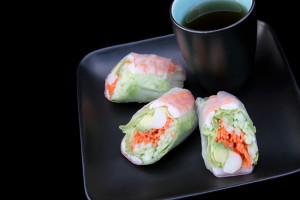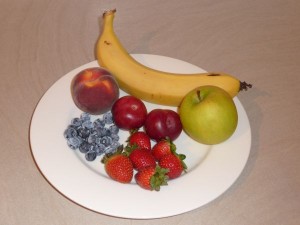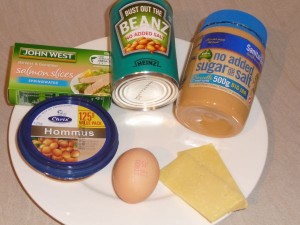 I do a lot of work with clients that have tummy and bowel problems and wanted to share 4 tips for someone thinking about seeing if foods upset them.
I do a lot of work with clients that have tummy and bowel problems and wanted to share 4 tips for someone thinking about seeing if foods upset them.
Common symptoms that clients report are diarrhoea and urgency to go (knowing where all the toilets are at shopping centres), abdominal pain, bloating (that can feel like you are pregnant), some people experience constipation or alternating diarrhoea and constipation. None of these symptoms are pleasant on a day to day basis!
Tip 1.
Go to your Doctor (and they may refer you on to a Gastroenterologist) to make sure there isn’t any medical reason for your symptoms.
It’s much easier to experiment with food changes after you’ve had all the tests. For example, if you cut out wheat before having investigations for coeliac disease you could potentially prevent a diagnosis and put up with symptoms for years.
If I haven’t talked you into going to the doctor yet, here are some stats. One in 100 Aussies have Coeliac disease, 1 in 250 has Crohn’s disease or Ulcerative Colitis, Endometriosis can mimic irritable bowel symptoms and occurs in 1 in 10 women.
Tip 2.
Start keeping a food, exercise, stress and symptom diary.
Yes this could take 15 minutes out of your day BUT it helps to see if there are any patterns. You can see how often your symptoms are happening, notice if stressful days have an impact, notice if severity of symptoms change. Food is harder to track as the transit time from food going in your mouth to coming out the other end (sorry no polite way of talking about this) could be up to 48 hours. Dietitians however, would look at the diary and see trends in fibre consumption, fibre type, hydration levels, caffeine consumption, fat content of meals, FODMAP content (more on this later) of the diet, salicylate and amine content of foods you usually eat and it helps us make some decisions on what food strategies to try first.
Tip 3
Come in and see an Accredited Practising Dietitian if you want to explore food options. Yes I am a Dietitian so of course I’m going to say this!
Research on low fodmap diets have shown that up to 50 – 76% of people have improvements of symptoms. Dietitians trained in this area can help. FODMAP stands for fermentable oligosaccharide, disaccharide, monosaccharide and polyols so you can see why we shorten the name.
When experimenting to see if there are food triggers, I will remove foods for 2-4 weeks to see if symptoms improve. As soon as you start excluding foods, there is a risk of making your dietary choices low in vitamins and minerals. A dietitian will reduce the risks by suggesting other nutrient dense foods to eat during the experimental phase.
If you get an improvement on the experimental diet, I will then get you to do some food challenges to find out what foods trigger your symptoms. You are not meant to be on a restricted range of foods forever.
Experimenting with fodmap foods is often the first strategy trialled but other options include trial of probiotics, experimenting with soluble and insoluble fibre intake, looking for possible food intolerance to salicylates and amines (15-71% response), and looking at fat and caffeine consumption and hydration especially in athletes with symptoms.
Tip 4
Only use Australian resources if you research FODMAPs
The simplest way I can explain these foods is that they have fermentable sugars or starches that don’t fully get digested in the small intestine and can cause wind, bloating, diarrhoea and abdominal pain as the bacteria in our large intestine use them and make gas.
If researching FODMAP foods, use the Monash University booklet or mobile app. I have had clients bring in FODMAP apps from Sweden and America and the food supply is completely different and the apps will just add to confusion with conflicting information.
Recent research on FODMAPs and endometriosis
Recent research has found an overlap between endometriosis and fodmap foods. This is another reason for women to have a thorough medical check before coming in to see a Dietitian, but also gives hope that there are some dietary strategies that can be used for endometriosis.
To summarise, if you have these symptoms and your doctor has excluded medical causes, experimentation with foods (with a Dietitian) can reduce your symptoms and identify the triggers.
For consultations at the clinics click the Contact Us page.
If you would like a consultation via Skype please contact me on info@dietitianservicesqld.com.au
Further reading
Magge S, Lembo A. Gastroenterol Hepatol 2012 Nov 8(11): 739-745 Low-FODMAP Diet for Treatment of Irritable Bowel Syndrome
Regards, Cathie Lowe
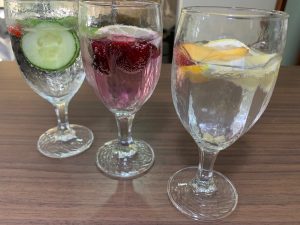


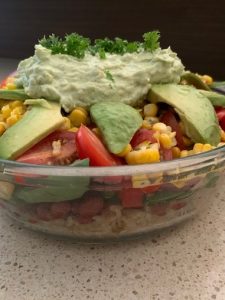
 Jamie and Mark Witte (MJ Witte Builder) are brothers (and my cousins) and both are chippies and builders. When I heard it was Tradie Health Month I thought of them as I know they eat and enjoy healthy lunches.
Jamie and Mark Witte (MJ Witte Builder) are brothers (and my cousins) and both are chippies and builders. When I heard it was Tradie Health Month I thought of them as I know they eat and enjoy healthy lunches. I do a lot of work with clients that have tummy and bowel problems and wanted to share 4 tips for someone thinking about seeing if foods upset them.
I do a lot of work with clients that have tummy and bowel problems and wanted to share 4 tips for someone thinking about seeing if foods upset them.